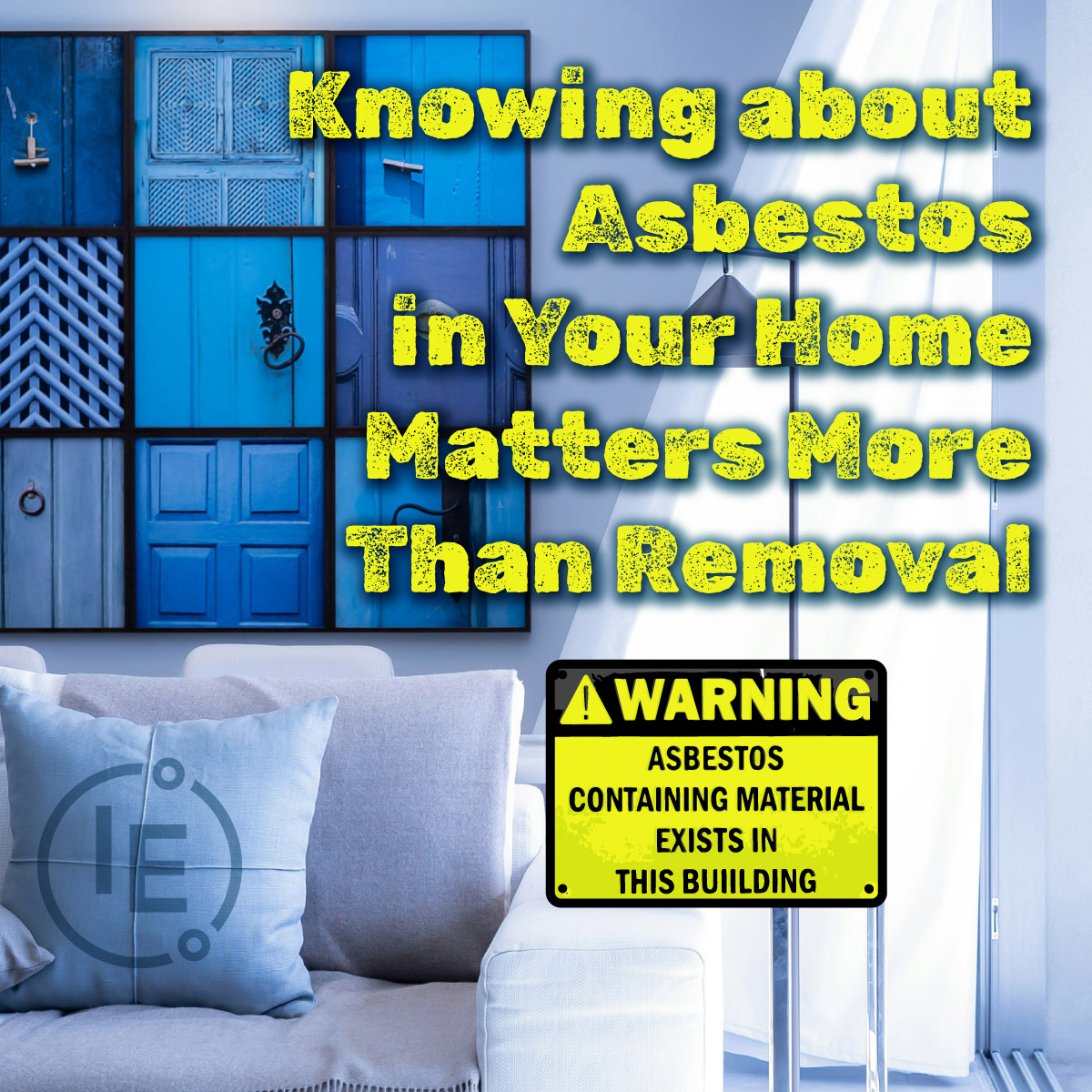Colorado asbestos basics
With the exception of a few materials (like…Quarry stone, glass, rubber, styrofoam, wood, fiberglass) materials are assumed to have asbestos until you prove they don’t, regardless of when the property was built! You should know about asbestos in your home, whether or not you have plans for removal.
You’re not testing to prove a material has asbestos, it’s already assumed to have it. You’re testing to prove it does not have it. If you do not test it, by law you are to follow removal practices and laws as if it contained asbestos. Colorado has strict asbestos testing and removal regulations.
In the realm of home renovation and remodeling, asbestos concerns loom, especially in older properties adorned with the infamous popcorn ceilings. While the temptation to rid your home of this hazardous material may be strong, understanding why asbestos testing is crucial, even if removal isn’t imminent, is paramount. Knowing about asbestos in your home matters more than immediate removal. Here’s why.
The Myth of Mandatory Asbestos Removal
Contrary to popular belief, not all asbestos-containing materials necessitate immediate removal. While asbestos is undoubtedly hazardous when disturbed, undisturbed asbestos materials pose almost no health risks. Rather than rushing into removal, homeowners should prioritize understanding the presence and condition of asbestos in their homes through thorough asbestos inspection and testing.
Popcorn Ceilings: A Hidden Hazard
The allure of smooth, modern ceilings has led many homeowners to embark on the journey of popcorn ceiling removal. However, what lies within the textured surface may be a hidden danger – asbestos. Popcorn ceilings were a popular design choice in the mid-20th century, and many of these contain asbestos fibers for added strength and fire resistance and acoustical properties.. Before initiating any removal efforts, it’s imperative to conduct asbestos testing to determine the presence of asbestos in your popcorn ceilings.
Vermiculite Insulation: Unseen Asbestos Threat
Another common hiding spot for asbestos is vermiculite insulation, particularly prevalent in older homes. Vermiculite, a naturally occurring mineral often used for insulation purposes, may contain asbestos fibers, especially if sourced from contaminated mines like the one in Libby, Montana. Given its loose and easily disturbed nature, vermiculite insulation poses significant risks of asbestos exposure during renovation or attic exploration. If your home has standard BAT insulation, you most likely will not have any risk. However, as with other materials, be safe and assume it does. Here’s some more information from the EPA on Vermiculite insulation and safety.
Other Areas Asbestos May Be Hiding
Apart from popcorn ceilings and vermiculite insulation, asbestos may lurk in other unsuspecting areas of your home. For instance, older homes may have asbestos-containing materials in pipe insulation, boiler insulation, and even in textured paints or plasters. Asbestos was once a common additive in various construction materials for its various properties like fire proofing, sound proofing, chemical resistance etc., making its presence a potential concern in numerous nooks and crannies of older properties.
Mitigating Asbestos Exposure
While the mere presence of asbestos in your home may not pose an immediate threat, the risk arises when these materials are disturbed during renovation or remodeling activities. Sanding, scraping, or demolishing asbestos-containing materials can release hazardous fibers into the air, leading to potential asbestos exposure for you and your family. By conducting asbestos inspection and testing beforehand, you can mitigate this risk and plan your remodeling projects accordingly.
The Importance of Asbestos Abatement
In cases where asbestos removal is deemed necessary, proper state regulated abatement procedures must be followed to ensure the safety of occupants and workers. DIY asbestos removal is strongly discouraged due to the associated health risks and regulatory requirements. Hiring certified asbestos abatement professionals ensures compliance with safety standards and reduces the likelihood of exposure during removal activities.
Consider Asbestos in your Future Plans
Even if you have no immediate plans for asbestos removal, knowing about its presence in your home is essential for future renovations. By conducting asbestos inspection and testing, you can develop a comprehensive remodeling plan that takes into account the presence of asbestos-containing materials. This proactive approach allows you to prioritize safety and compliance while achieving your renovation goals.
While the prospect of asbestos removal may seem like a lot, understanding the importance of asbestos inspection and testing can empower homeowners to make informed decisions about their homes. By prioritizing safety, mitigating exposure risks, and planning for the future, you can navigate the complexities of asbestos management with confidence. Whether you’re considering popcorn ceiling removal, exploring your attic, or embarking on a full-scale renovation, knowing about asbestos in your home is the first step toward creating a safe and healthy living environment for you and your loved ones.
Do You Want to Know for Sure?

Always Free Consultations

Call Now!
We’ll Call You!
#colorado #asbestosawareness #asbestos #HomeRenovation #AsbestosTesting

